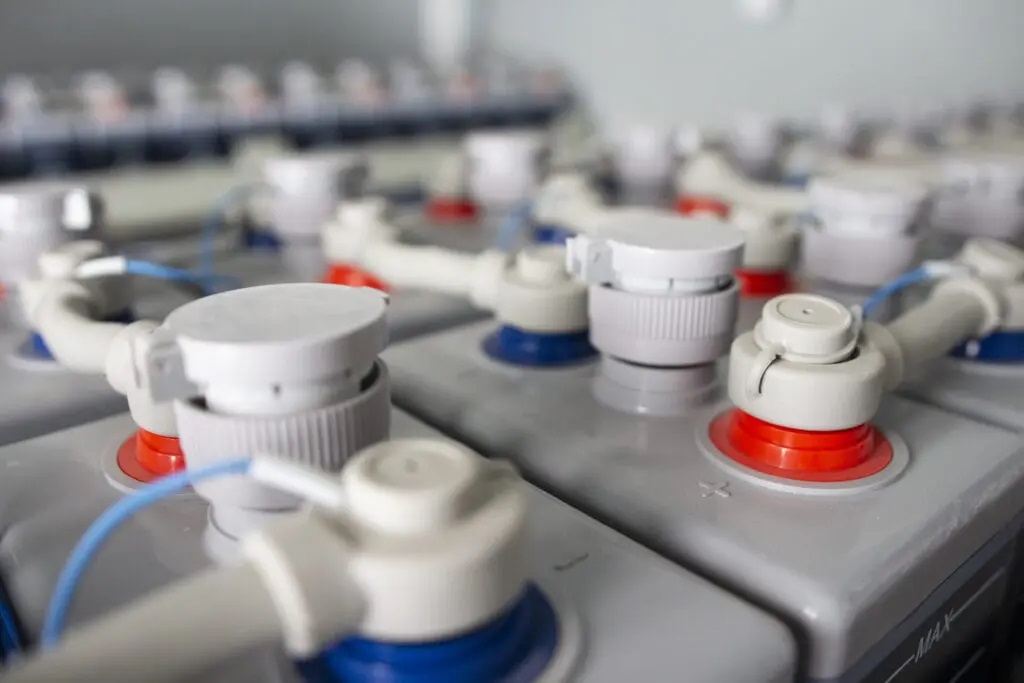Proper installation conditions are crucial for ensuring the safe and efficient operation of lead-acid batteries. Whether used in automotive applications, standby power systems, or renewable energy installations, adhering to recommended installation guidelines helps maximize battery performance and lifespan.
- Ventilation:
- Provide adequate ventilation in the battery room or enclosure. Lead-acid batteries, especially flooded (wet cell) types, can release hydrogen gas during charging, which is both flammable and can displace oxygen. Proper ventilation helps prevent the accumulation of explosive gas concentrations.
- Temperature Control:
- Maintain the operating temperature within the recommended range. Elevated temperatures can accelerate battery aging, while extreme cold temperatures can reduce battery performance. Consider environmental factors and install batteries in a location that helps regulate temperature.
- Orientation:
- Install batteries in the recommended orientation as specified by the manufacturer. In most cases, lead-acid batteries can be installed in any position, but it’s important to follow the manufacturer’s guidelines to ensure proper electrolyte distribution and venting.
- Physical Support:
- Provide secure physical support for the batteries to prevent tipping or movement. Batteries should be mounted on a stable, level surface to avoid any stress on the battery casing or connections.
- Electrical Connections:
- Ensure proper electrical connections. Tighten terminals to the manufacturer’s specifications to avoid loose connections, which can lead to overheating. Use appropriate tools and torque values to achieve proper terminal connections.
- Polarity:
- Observe correct polarity during installation. Connect batteries in series or parallel as needed, following the specified positive-to-negative connections. Incorrect polarity can lead to damage and unsafe operation.
- Cable Sizing:
- Use appropriate cable sizes for interconnecting batteries and connecting to the load and charging systems. Undersized cables can result in voltage drops and reduced efficiency.
- Environmental Protection:
- Protect batteries from harsh environmental conditions, including excessive dust, moisture, and corrosive elements. Consider using enclosures or battery boxes to shield the batteries from external influences.
- Maintenance Access:
- Ensure easy access for maintenance activities. This includes regular visual inspections, cleaning, and, if applicable, adding water to flooded lead-acid batteries. Proper maintenance access contributes to the longevity of the batteries.
- Safety Measures:
- Implement safety measures, such as eye protection and gloves, when working with lead-acid batteries. Acid from the batteries is corrosive, and safety precautions should be taken during installation, maintenance, and handling.
- Labeling:
- Clearly label batteries with relevant information, including voltage, capacity, and safety instructions. Proper labeling aids in maintenance and ensures that users are aware of essential information.
- Manufacturer Guidelines:
- Follow the specific installation guidelines provided by the battery manufacturer. Different types of lead-acid batteries (e.g., flooded, AGM, gel) may have unique requirements, and adherence to manufacturer instructions is essential.
By carefully following these installation conditions, users can optimize the performance, safety, and lifespan of lead-acid batteries in various applications.


